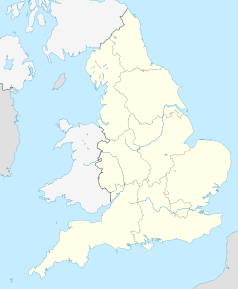Whittingham (Northumberland)
| ||
(c) Oliver Dixon, CC BY-SA 2.0 | ||
| Państwo | ||
| Kraj | ||
| Hrabstwo | Northumberland | |
| Populacja (2001) • liczba ludności | 406 (2001 census)[1] | |
| Nr kierunkowy | 01665 | |
| Kod pocztowy | NE66 | |
Położenie na mapie Northumberland Contains Ordnance Survey data © Crown copyright and database right, CC BY-SA 3.0 | ||
Położenie na mapie Wielkiej Brytanii (c) Karte: NordNordWest, Lizenz: Creative Commons by-sa-3.0 de | ||
| Portal | ||
Whittingham – wieś w Anglii, w hrabstwie Northumberland. Leży 51 km na północ od miasta Newcastle upon Tyne i 448 km na północ od Londynu[2]. W 2001 miejscowość liczyła 406 mieszkańców[1].
Przypisy
- ↑ a b Office for National Statistics: Neighbourhood Statistics. [dostęp 2012-08-05]. [zarchiwizowane z tego adresu (2012-08-05)].
- ↑ Whittingham na mapie (ang.). getamap.ordnancesurvey.co.uk. [dostęp 2010-11-27].
Media użyte na tej stronie
Contains Ordnance Survey data © Crown copyright and database right, CC BY-SA 3.0
Map of Northumberland, UK with the following information shown:
- Administrative borders
- Coastline, lakes and rivers
- Roads and railways
- Urban areas
Equirectangular map projection on WGS 84 datum, with N/S stretched 170%
Geographic limits:
- West: 2.85W
- East: 1.35W
- North: 55.83N
- South: 54.77N
(c) Karte: NordNordWest, Lizenz: Creative Commons by-sa-3.0 de
Location map of the United Kingdom
Flag of England. Saint George's cross (a red cross on a white background), used as the Flag of England, the Italian city of Genoa and various other places.
(c) Oliver Dixon, CC BY-SA 2.0
Whittingham Tower This tower in the village of Whittingham was built in the 13th/14th centuries. In 1845, it was converted into almshouses by Lady Ravensworth.









